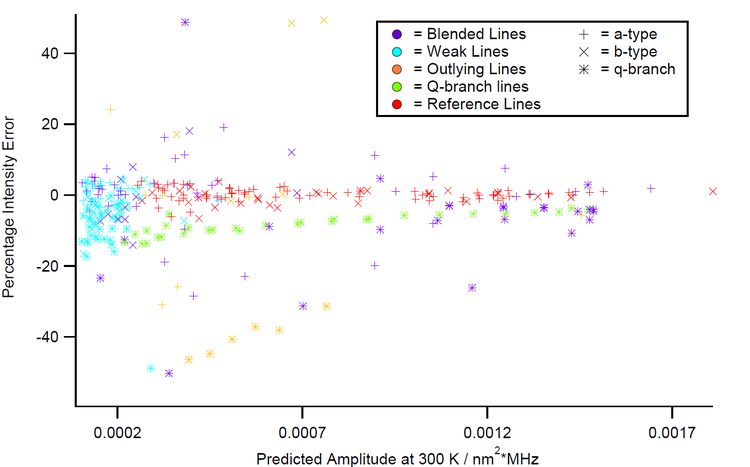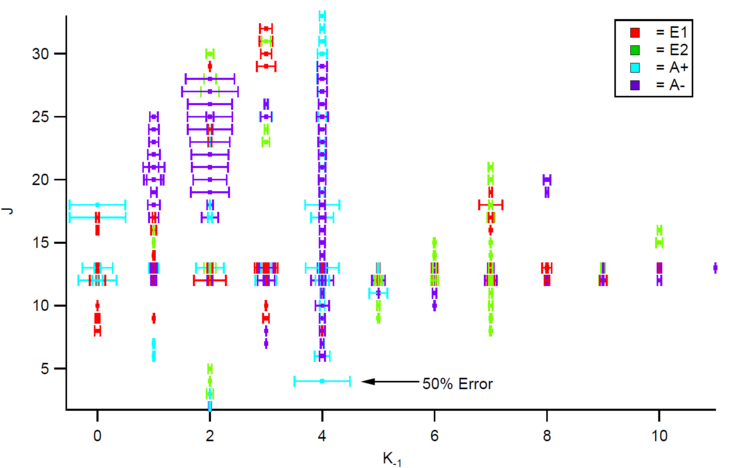
V.B.4.d Intensities
In the analysis and characterization of rotational spectra, it is usually expected that if spectral assignment and analysis of the frequencies has been successfully carried out that this establishes the values of the quantum mechanical angular momentum operators well enough that a DC Stark Effect measurement (to establish the components of the electric dipole moment) allows the calculation of rotational energies. Most, if not all, astronomical analyses assume this.
Indeed, our CES analyses are based on using the intensities of ground vibrational state lines as a reference. This both avoids the need to accurately measure pressures and provides a useful benchmark for our intensity calibration.
In our work on semi-rigid molecules the residuals of the intensity fit to were 1 – 2%. When this procedure was used for methanol, a number of residuals in excess of 40% were observed. Since the QM intensities are not consistent with the experimental intensities, it was necessary to select a subset for use in for the measurement of T and nL/Q. Figure V.B.4.d-1 shows the percentage differences for all of the original 326 reference lines, but from a fit that excluded the lines whose intensities were outerliers.

Figure V.B.4.d-1.
Figure V.B.4.d-2 shows the percentage intensity differences as function of the J and K-1 quantum numbers. In this figure the differences are represented by the size of the horizontal error bars and the color coding provides information about the type of transition. For example, the large differences at K-1 = 2 and running from J = 19 to J = 28 correspond to the family of gold {stars} in the lower left of Fig. V.B.4.d-1.

Figure V.B.4.d-2.
These deviations between experiment and modeling are almost certainly due to the use of highly ‘effective’ Hamiltonians and their growth as the spectral range of methanol to be characterized has expanded. The current model, which is described as a ‘work in progress’ contains 119 adjustable parameters, adjusted only to reproduce frequencies, not intensities. Now that accurate intensities are available it is interesting to speculate as to whether or not these ‘effective’ Hamiltonians have enough freedom to also fit intensities as well. Clearly, it would be highly desirable to have more physical Hamiltonians.